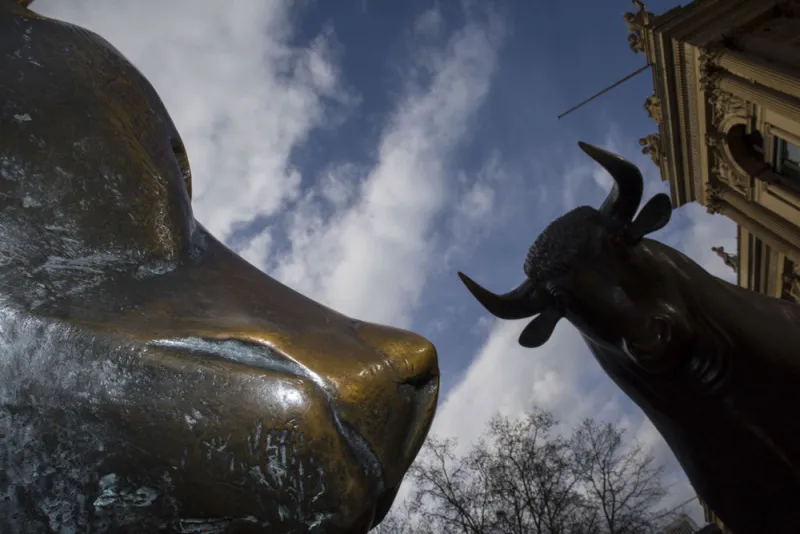Wittingly or unwittingly, pensions and endowments’ investment strategies aid and abet activities that make the financial system more fragile.
The growing scale of institutions and the large amounts of money they need to deploy into high-risk investments is leading to consolidation among asset managers, higher global debt levels, short-term corporate behavior, and market instability, according to a paper published Wednesday by the Predistribution Initiative, a group that focuses on governance, investment practices, and the systemic risks of investments, among other things.
In the paper, group founder Delilah Rothenberg and her co-authors lay out a case that institutions’ investment strategies are in conflict with environmental, social, and governance goals to which they are increasingly committing. In an interview with Institutional Investor, Rothenberg said critics of structural flaws in investing and markets need to look at how capital flows through the system to pinpoint the source of problems, including the anti-competitive behavior of corporations.
“Capital markets have become institutionalized,” she said. “Pension funds, insurance companies, sovereign wealth funds and others need to deploy large amounts of capital efficiently because they themselves are so big.”
Institutions’ only option in many cases is to put billions of dollars to work in the largest public and private companies, Rothenberg explained. That results in companies, for example, taking on unsustainable amounts of debt.
“There are incentives to layer on debt, much of which is supplied by capital markets and the shadow banking sector,” she said. “Ironically, institutional investors want to integrate ESG into their process, but they also contribute to corporate consolidation and huge debt burdens. Institutional investors are essentially contributing to some of their own problems in the way they allocate capital to leveraged loans, high-yield loans, collateralized loan obligations” and other higher risk products.
The working paper is one of the first to address barriers to ESG at the institutional level, not just at individual companies.
“The ESG and investment teams of an institutional investor may have competing objectives,” according to the paper. The authors argue that mega-size asset managers can “create barriers for diverse fund managers and entrepreneurs, jeopardize quality jobs, erode the quality and affordability of goods and services, increase asset class correlations, reduce diversification opportunities, and ultimately fuel economic inequality and market instability.” Big investors also experience lower financial returns, according to the research.
Meanwhile, huge debt burdens can often impede environmental and social goals, according to the paper.
Companies have to think about how to service debt or distributions to investors rather than worker pay and benefits. Investments like power, water, nursing homes, or housing could be poorly structured so that prices become unaffordable to consumers or these businesses provide poor quality services in an effort to meet the return expectations of investors.
[II Deep Dive: $1 Trillion Investor Group Demands Climate Action From Regulators]
All of this adds to global systemic risks that have materialized twice in the last twelve years, with the global financial crisis in 2008 and at the beginning of the pandemic in 2020.
“Eventually, unchecked increases in corporate debt result in increased systematic market risk that boomerangs back to investors and their portfolios,” the authors wrote.
The authors argued that existing approaches like Modern Portfolio Theory and ESG or impact investing frameworks don’t focus on these potentially negative effects.
“Perversely, as major central banks globally respond to the current crisis with rock bottom interest rates and new rounds of quantitative easing (QE), investors and companies are further incentivized to increase their exposure to high-risk debt and inflated asset valuations — a situation that leaves society and markets vulnerable to a rise in interest rates or other unplanned challenges,” they wrote.







